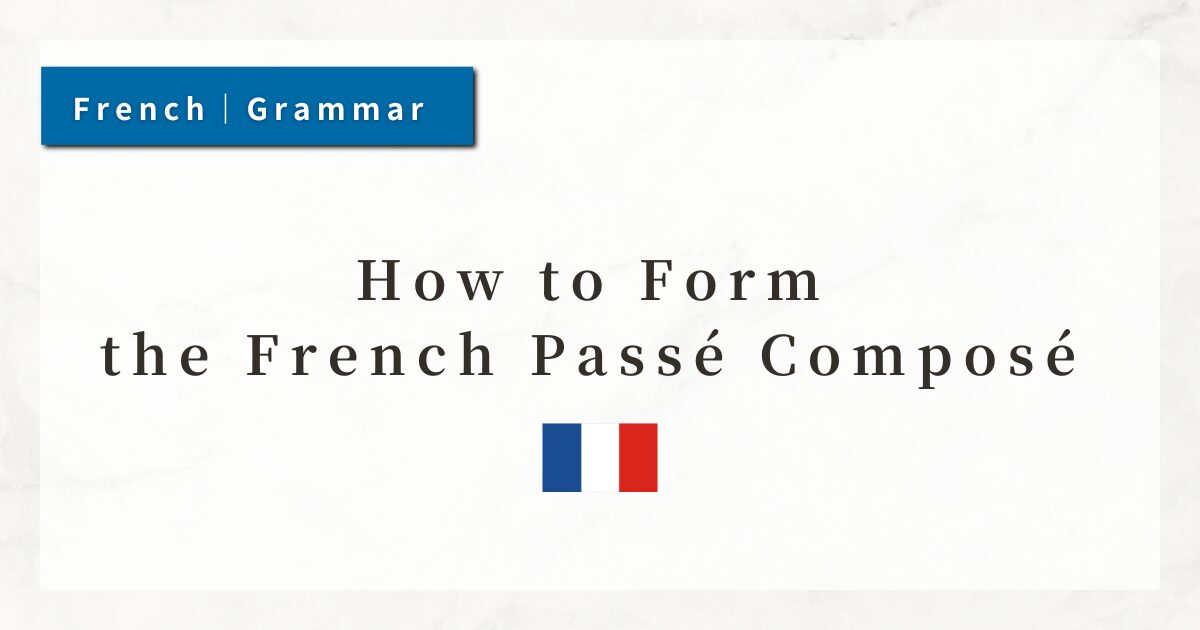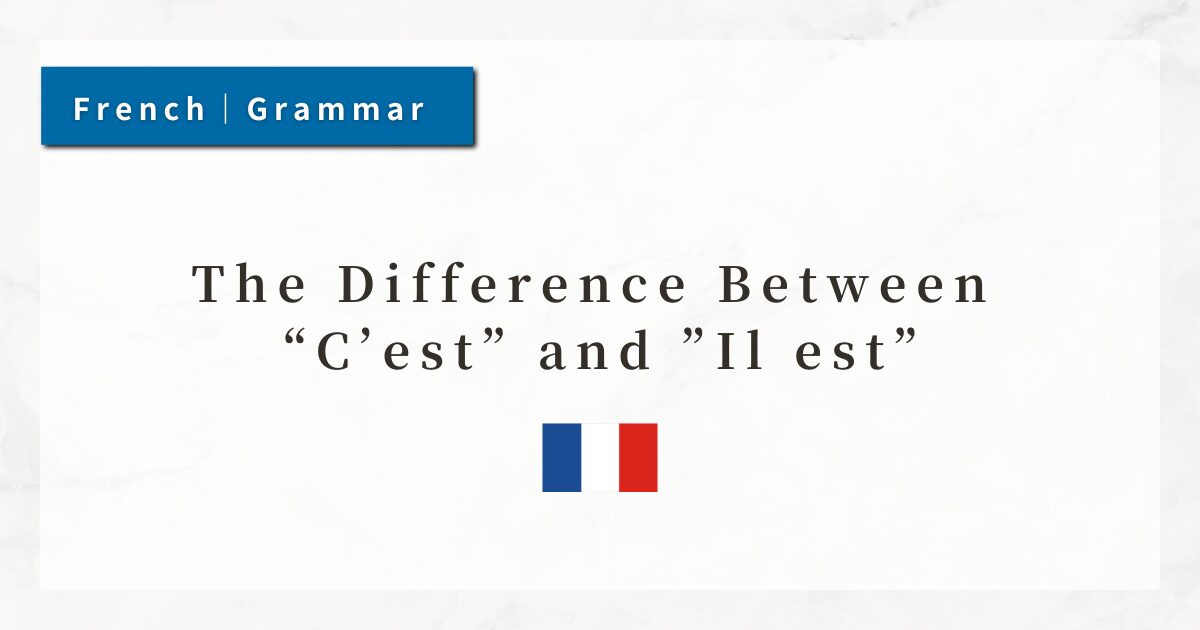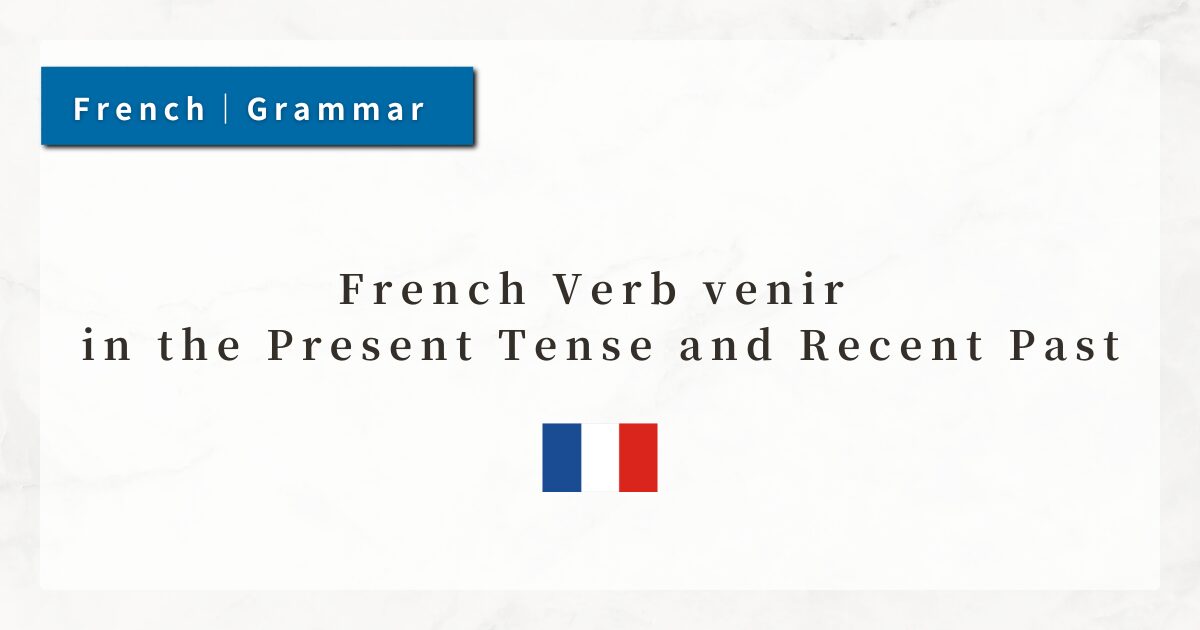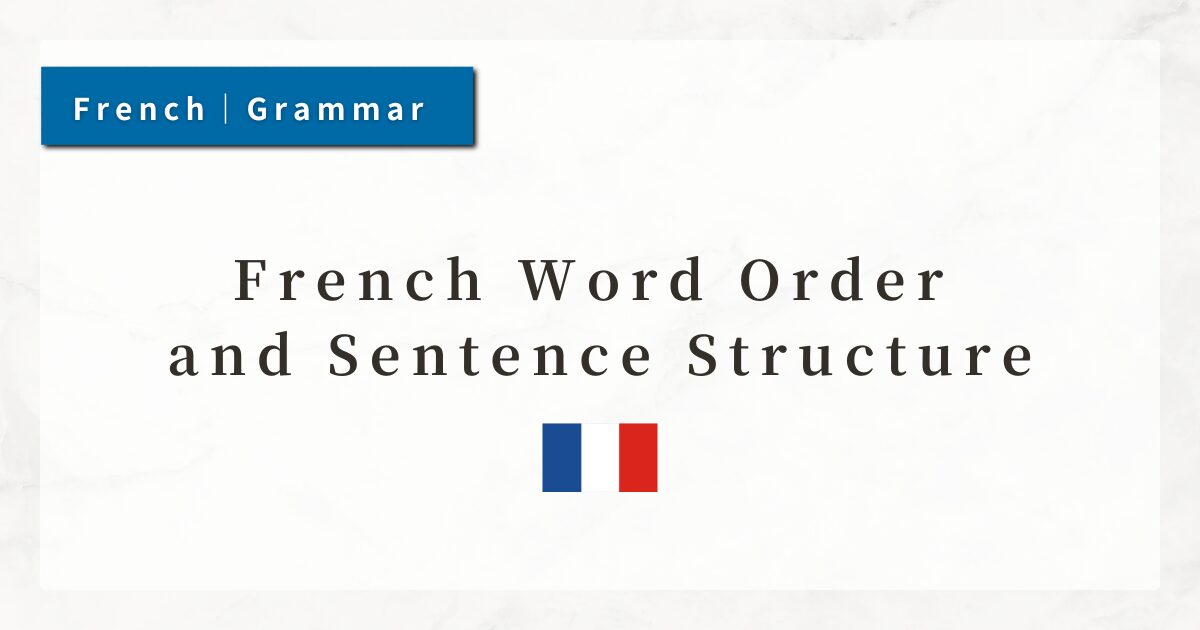#25 How to Form the French Passé Composé | Conjugation of avoir and être with Examples

In French, the passé composé is used to describe completed past actions, such as “ate,” “went,” or “finished.”
It is one of the most frequently used past tenses in everyday conversation as well as in formal writing, making it essential to understand both verb conjugation and sentence structure.
In this lesson, I will explain the construction rules of the passé composé, how to form the past participle, and the main usage patterns.
1. What Is the Passé Composé?
The passé composé is one of the French past tenses used to express actions or events that have already been completed. It corresponds closely to English sentences like “I ate”, “I went”. It is the most common past tense in spoken French.
The structure is:
“Subject + Auxiliary Verb (present tense of avoir or être) + Past Participle.”
- J’ai mangé une pomme
. (I ate an apple.)
→ Auxiliary ai (1st person singular of avoir) + past participle mangé
In most cases, the auxiliary verb avoir is used. However, a certain group of verbs—mostly those indicating movement or change of state—require être.
2. Role of the Past Participle and the Auxiliary Verb
In the passé composé, the auxiliary verb provides the grammatical framework (tense and subject agreement), while the past participle expresses the action itself.
Example: J’ai parlé. (I spoke)
- ai = auxiliary verb (avoir)
→ shows tense and person - parlé = past participle
→ carries the meaning “to speak”
Although the auxiliary verb is in the present tense, the overall meaning is past and completed action.
3. How to Form the Past Participle
To use verbs in the passé composé, it is necessary to form the correct past participle. For regular verbs, replace the infinitive ending according to the verb group:
| Verb Group | Infinitive Ending | Past Participle Ending | Rule |
|---|---|---|---|
| 1st group verbs | -er | -é | remove -er, add -é |
| 2nd group verbs | -ir | -i | remove -ir, add -i |
| 3rd group verbs | -re | -u | remove -re, add -u |
Many irregular verbs (e.g., avoir, être, faire, voir) must be memorized individually. Start by learning the most common ones.
4. Choosing Between avoir and être
In the passé composé, the auxiliary verb is either avoir (to have) or être (to be).
- Most verbs use avoir.
- Certain verbs use être under specific conditions.
4-1: Verbs of Movement and Change of State (use être)
Verbs that indicate a change of location or state usually take être:
- aller (to go) → past participle: allé
- venir (to come) → venu
- arriver (to arrive) → arrivé
- partir (to leave) → parti
Other verbs involving arrival, departure, birth, death, and change of state also use être.
4-2. Reflexive Verbs (always use être)
Reflexive verbs, which describe actions performed on oneself (se + verb), also use être:
- se lever (to get up)
- se laver (to wash)
- s’amuser (to have fun)
4-3. Agreement of the Past Participle with être
When the auxiliary is être, the past participle must agree in gender and number with the subject.
- Il est allé.
(He went.)
→ masculine singular → allé - Elle est allée.
(She went.)
→ feminine singular → allée - Ils sont allés.
(They went.)
→ masculine plural → allés - Elles sont allées.
(They went.)
→ feminine plural → allées
5. Negation in the Passé Composé
In negative sentences, “ne … pas” surrounds the auxiliary verb.
- Je n’ai pas mangé.
(I did not eat.)
→ ne before the auxiliary ai, pas after it, followed by the past participle.
In spoken French, ne is often dropped:
- J’ai pas mangé.
Colloquial, but not suitable for formal writing or polite speech.
6. Forming Questions in the Passé Composé
6-1. Two Ways to Ask Questions
There are two main forms:
- Standard
→ Est-ce que + subject + auxiliary + past participle - Inversion
→ Auxiliary – subject + past participle
Examples:
- Est-ce que tu as mangé ?
(Did you eat?)
→ most common, polite, and easy to form. - As-tu mangé ?
(Did you eat?)
→ inversion, more formal or used in writing.
6-2. Notes on Inversion
If the subject is a noun, it cannot be inverted directly. Instead, keep the noun at the front, followed by the auxiliary and the corresponding pronoun:
- Marie a-t-elle regardé un film ?
(Did Marie watch a movie?)
Here, a (3rd person singular of avoir) is inverted with elle, the pronoun corresponding to Marie.
When the auxiliary ends in a vowel and the pronoun begins with a vowel, -t- is inserted to avoid a vowel clash: a-t-elle.
7. Summary
- The passé composé consists of “auxiliary verb (avoir or être) + past participle.”
- Past participles are formed according to verb group endings (-er → -é, -ir → -i, -re → -u).
- In negation and questions, pay close attention to the placement of the auxiliary.
- When using être, the past participle must agree with the subject in gender and number.




